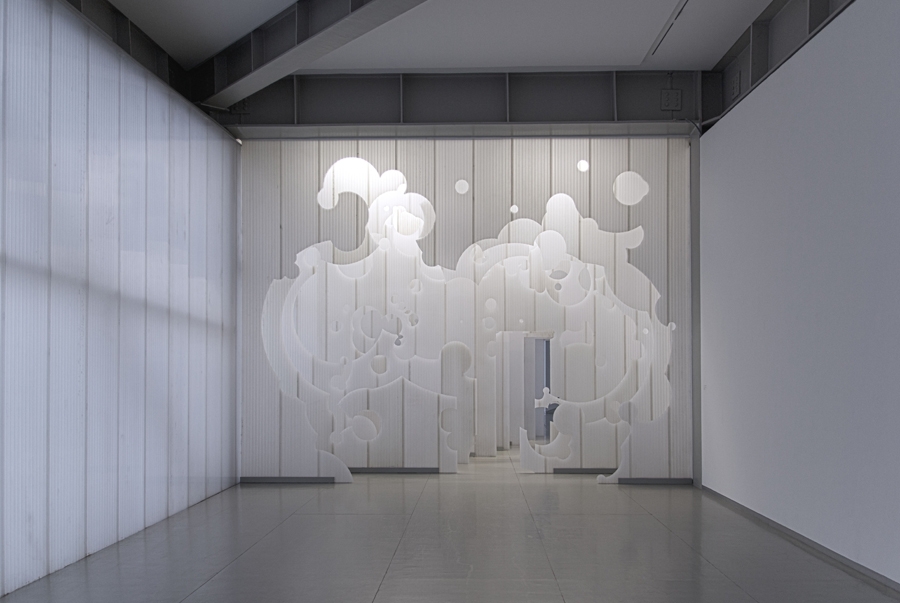A young naked woman is dancing, adopting poses from classical sculpture and moving in a cheerful green garden, in the middle of which is an empty place that would normally house the statue of some romantic figure: an equivalent to Oscar Wilde’s Happy Prince, perhaps. But this is not a live performance. Rather, it is a series of moving images from Kan Xuan’s video A Happy Girl (2002). The video is played on a monitor placed on a pedestal in the exhibition hall in Nanjing’s brand-new, Steven Holl-designed museum. It sits near a narrow window through which one can see a cheerful green garden, this time a real one – a landscaped campus in which the art museum is located.
This one work and its setting highlight the ingenious design of Philippe Pirotte’s The Garden of Diversion. It is as though the curator has placed invisible mirrors and windows in and outside the building – transparent or reflective optical instruments that allow one to see the dancing and moving content of one artwork in another, the museum and its cheerful green garden playing a major role in the scenography.
It is in the last setting that Xu Zhen (who has taken to recently referring to himself as a MadeIn Company Production) has created a garden of forking paths. A recent iteration of his Movement Field Series (2012–), it is composed of various itineraries that are collected from historical political and social movements. A garden of zen or jaku (tranquillity, one of four principals of Chanoyu by Japanese tea master Sen Rikyu [1522–91]) and a monumental space for social movements at the same time. Meanwhile, inside the museum building, He An has built up a minimalist ritual space titled Wind Light as a Thief (2013) using materials from urban construction sites to create an aesthetic alternative to the extravagantly manicured campus in which the museum, along with a hotel, a congress centre, a number of villas and other facilities, is set. Just a reminder, if you like, of a more tremendous and ambitious construction site: the modern China.
The theme of the show is drawn from writer Hu Fang’s 2009 novel Garden of Mirrored Flowers, about the reality of garden construction versus the narratives established by historical change and social upheaval. The novel also provides a parallel text to Olafur Eliasson’s film Your Embodied Garden (2013), the result of a trip to two scholar gardens in Suzhou, China, undertaken in the company of Hu, among others.
The other works (by a total of 24 artists from around the world), among them ten pieces of Danh Vō’s We the People (2010–13), a full-scale replica of the Statue of Liberty, continue to unfold the plot of Pirotte’s space-based fiction, opening up concepts such as the existence of a world-inside-a-world and a world-outside-the- world, and various iterations of the garden theme. It’s a show for wanderers, window-peepers, garden researchers, hyperlink-aholics and all those who are interested in illusions created via optical, spatial, iconographic or literal tricks.
This article was originally published in the March 2014 issue.
